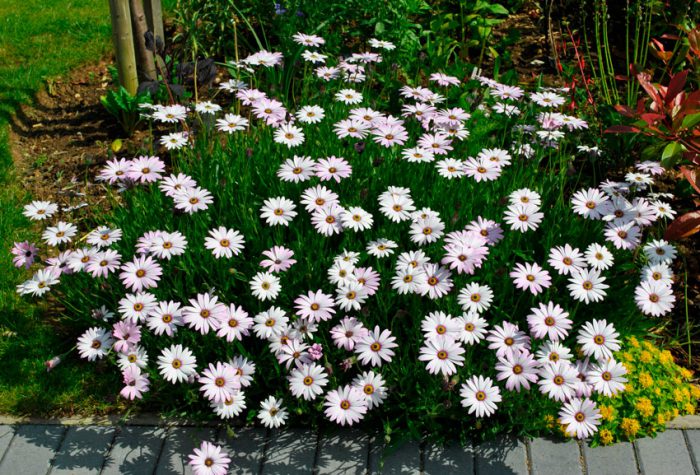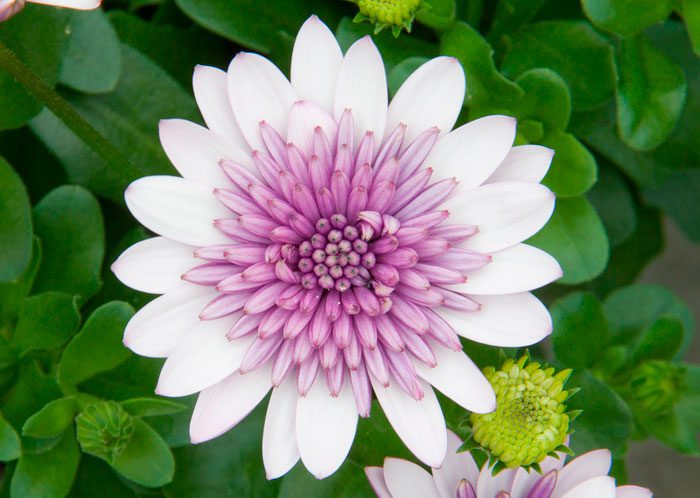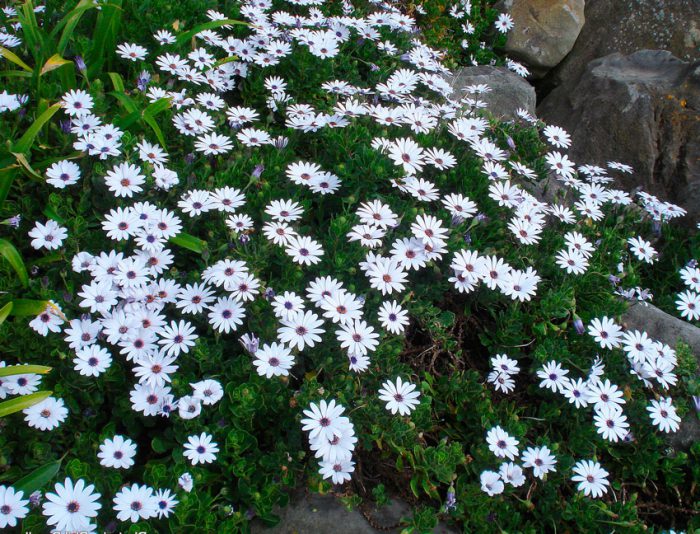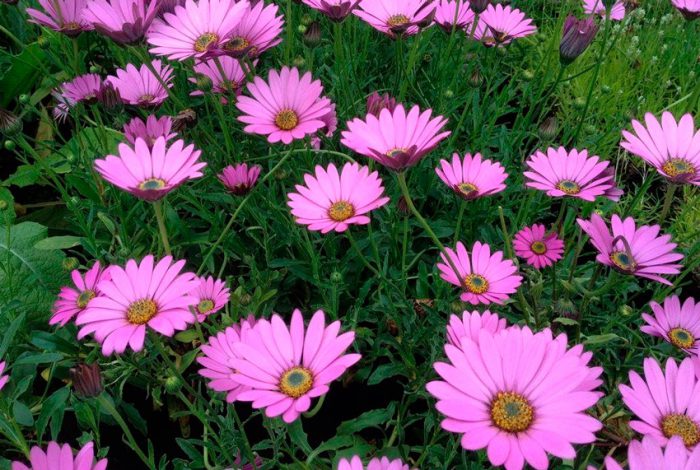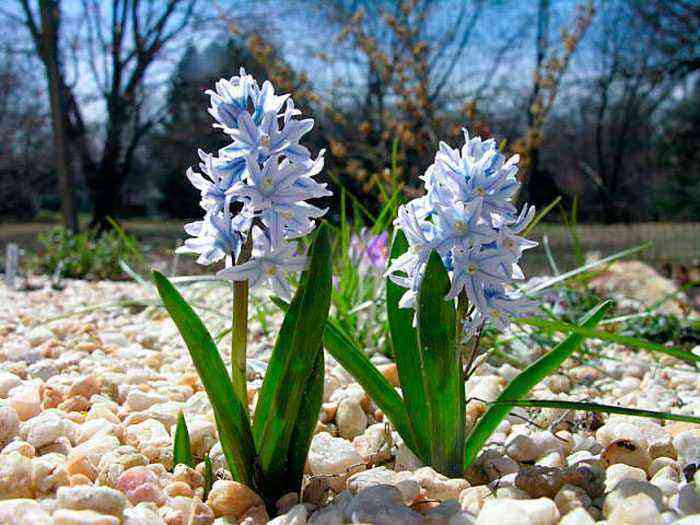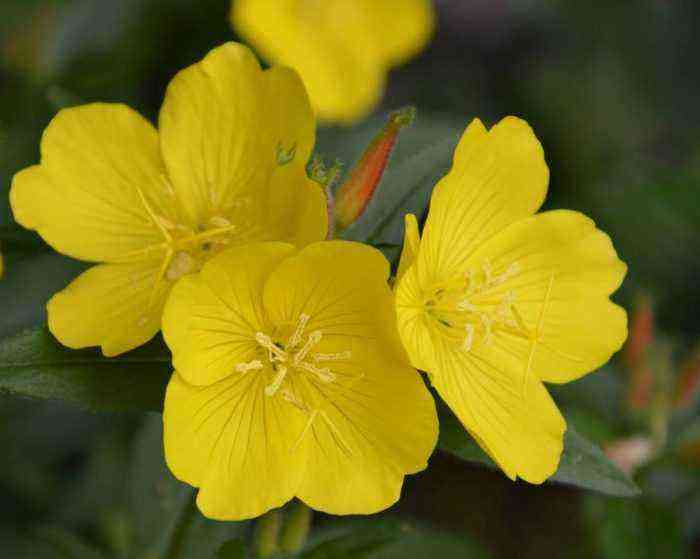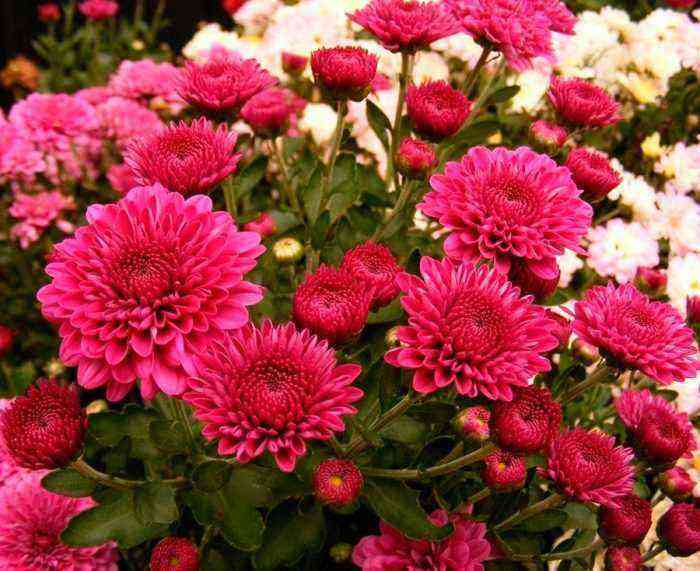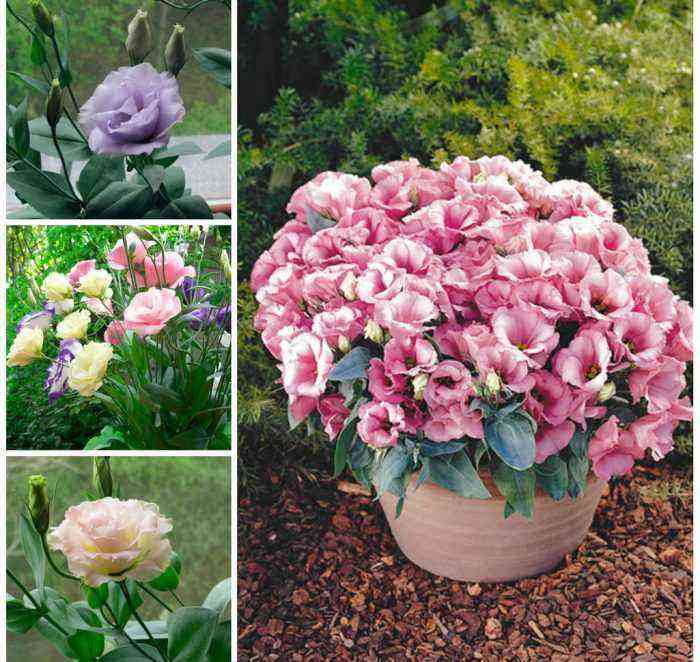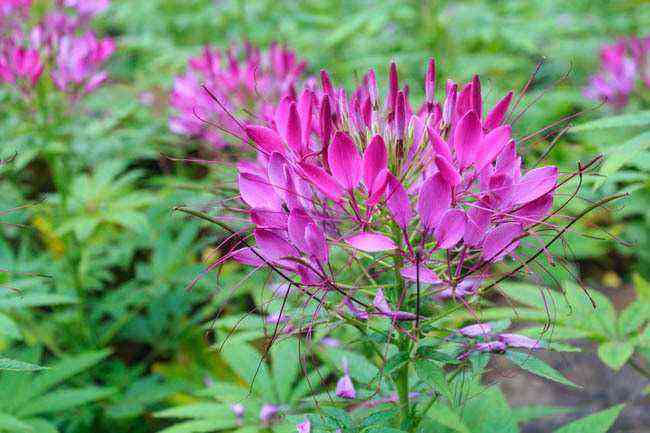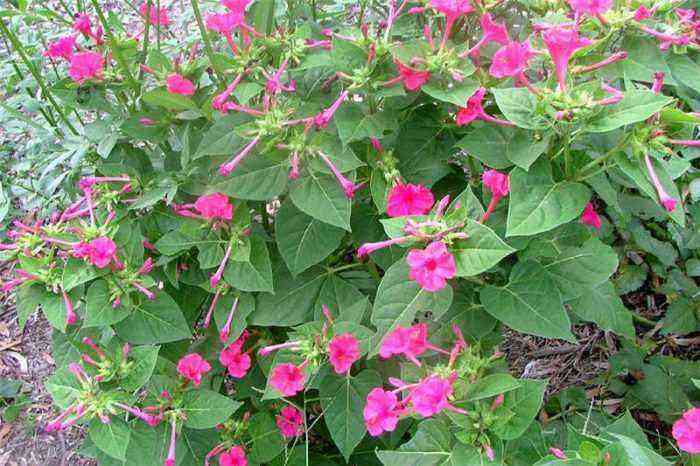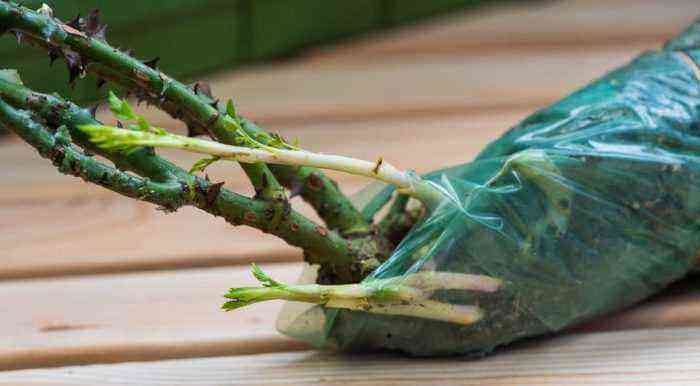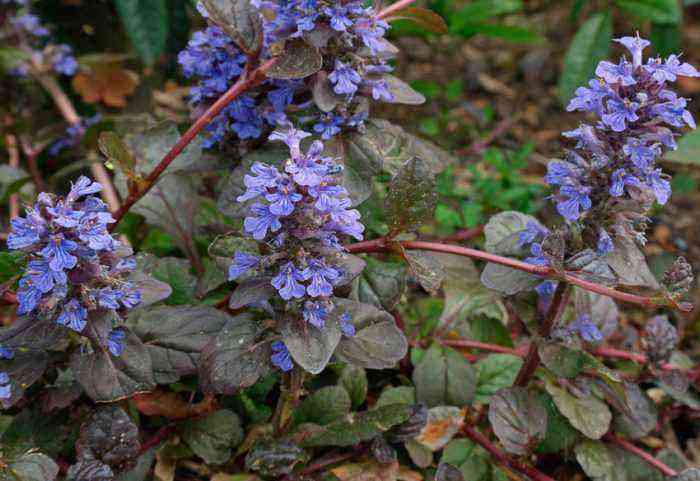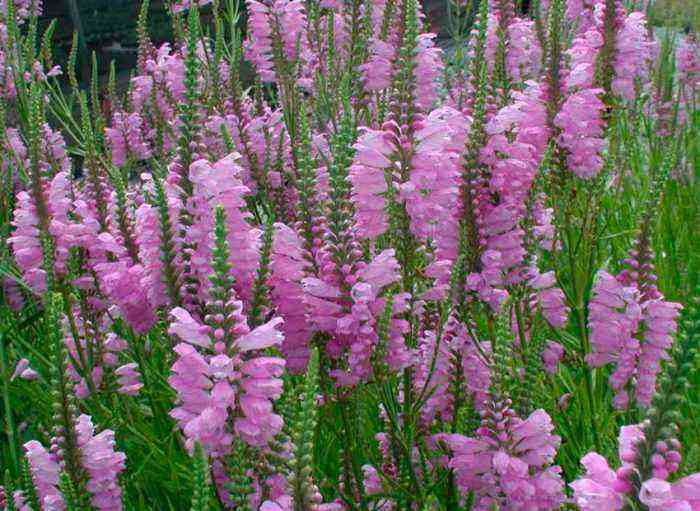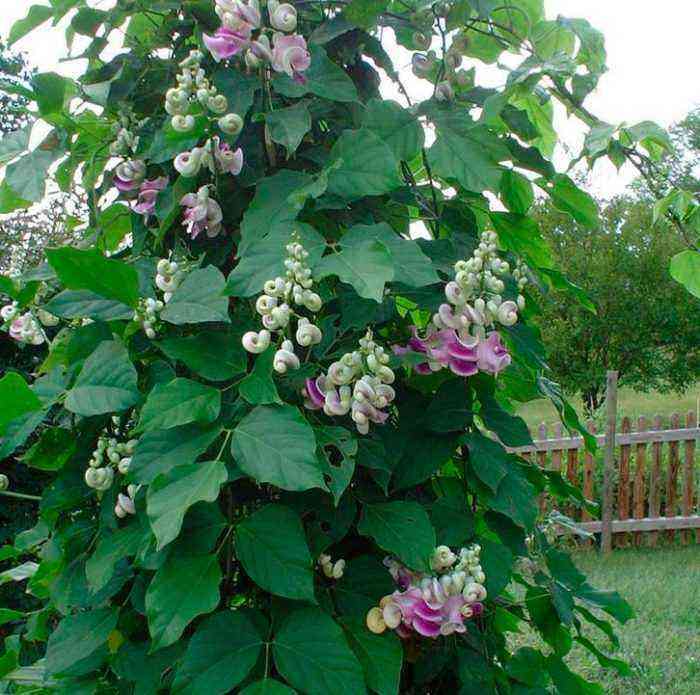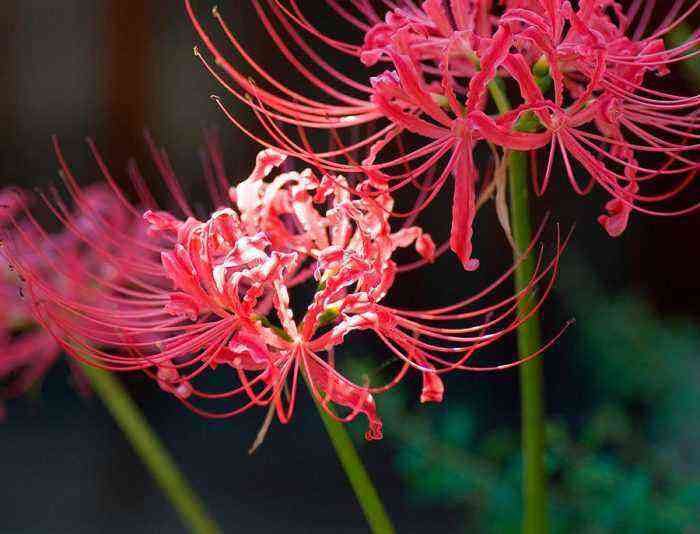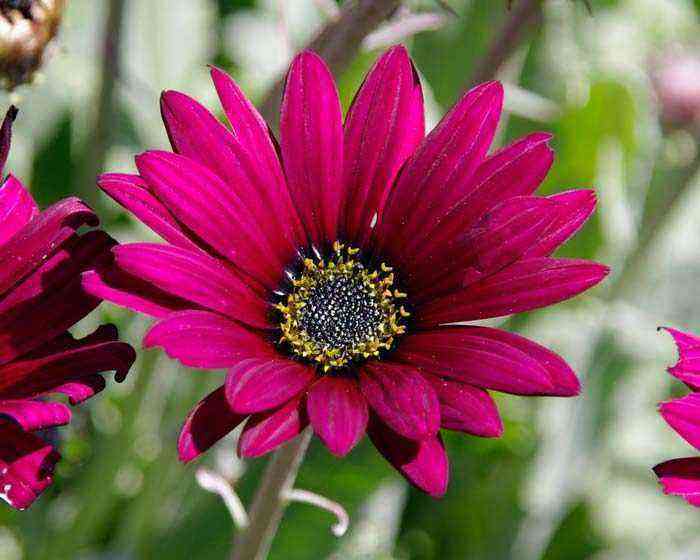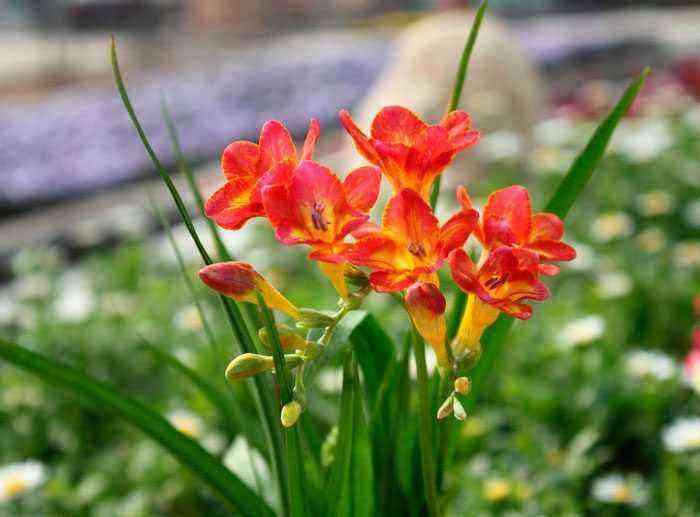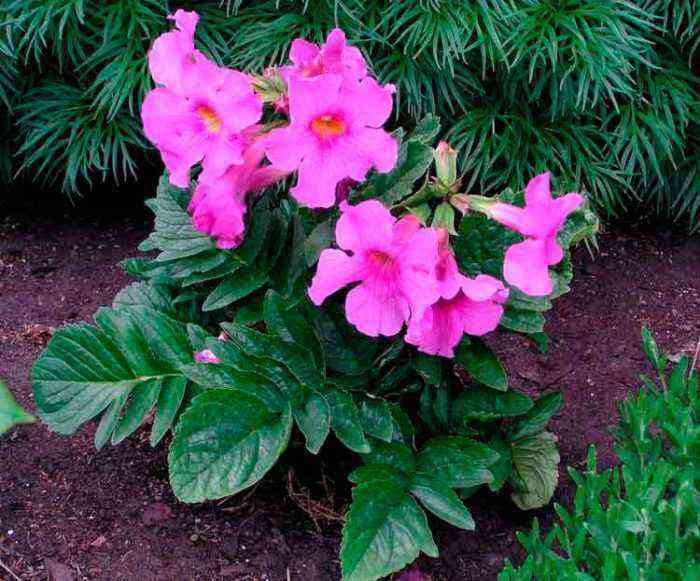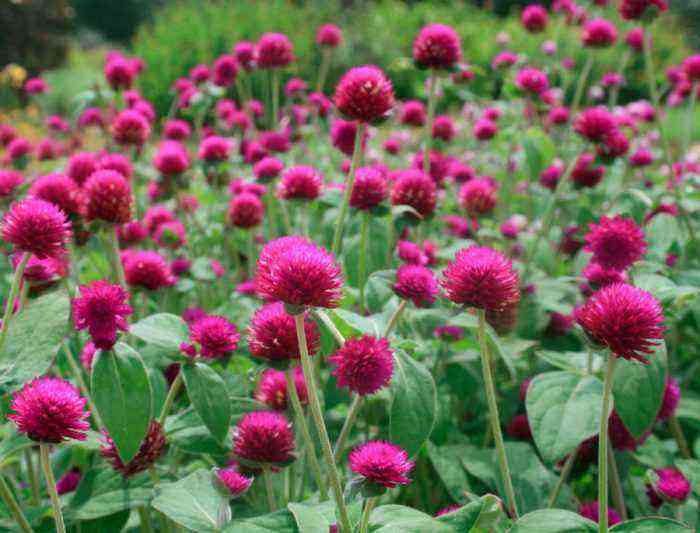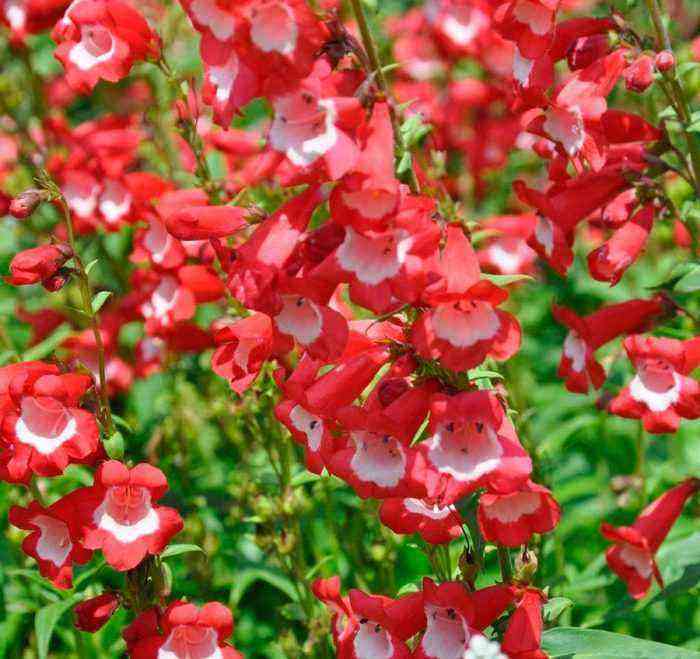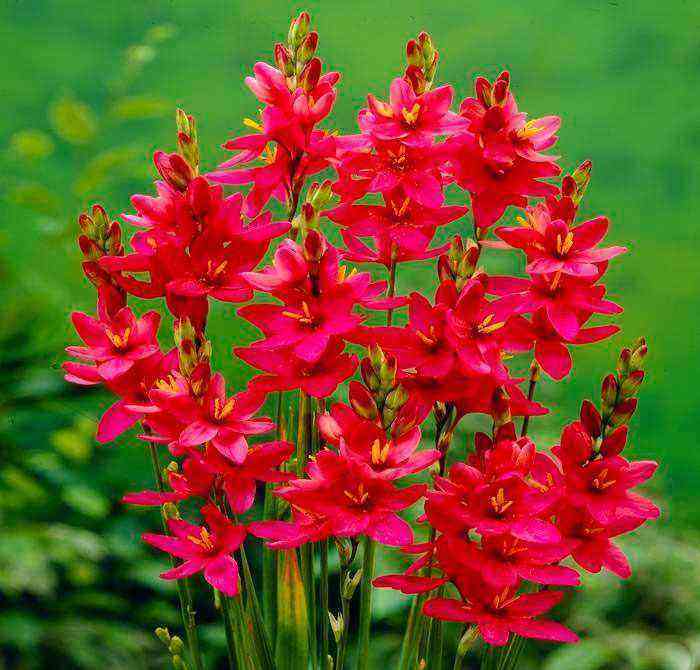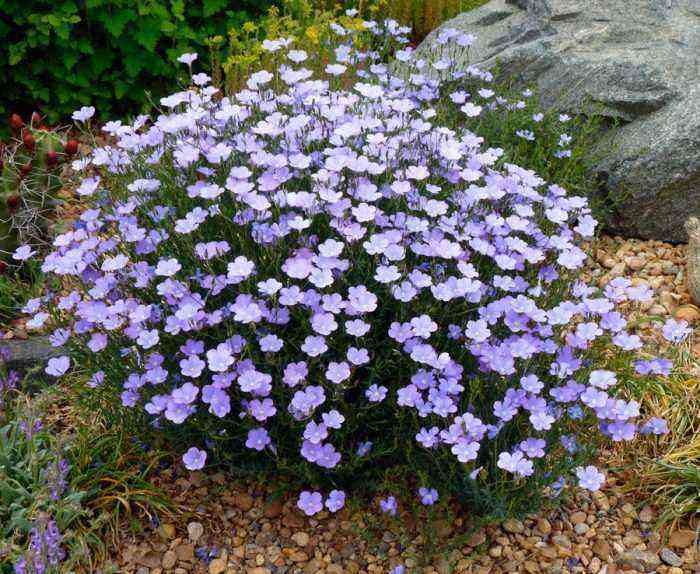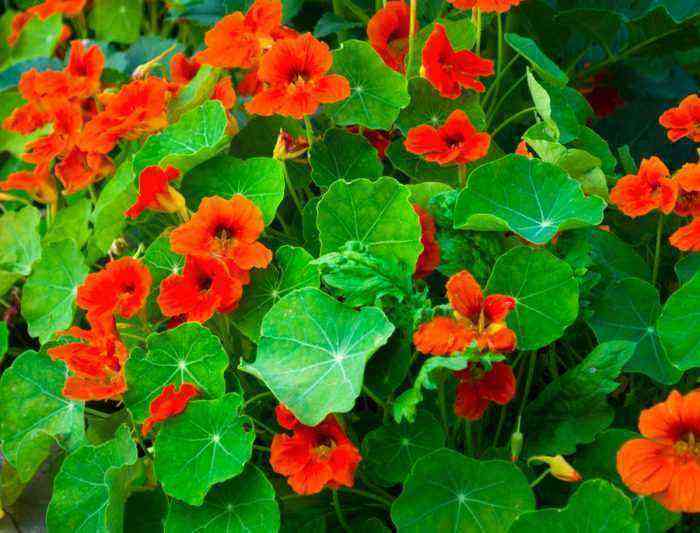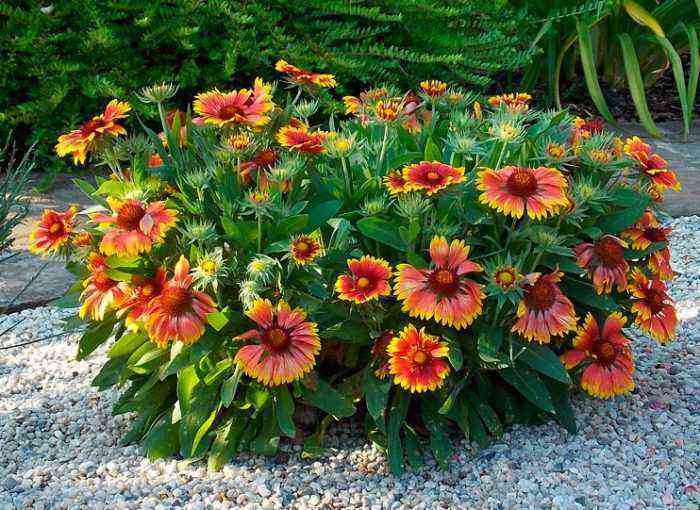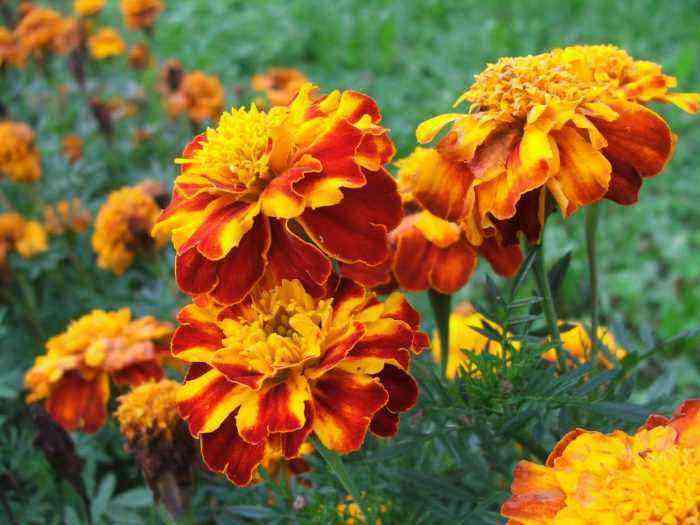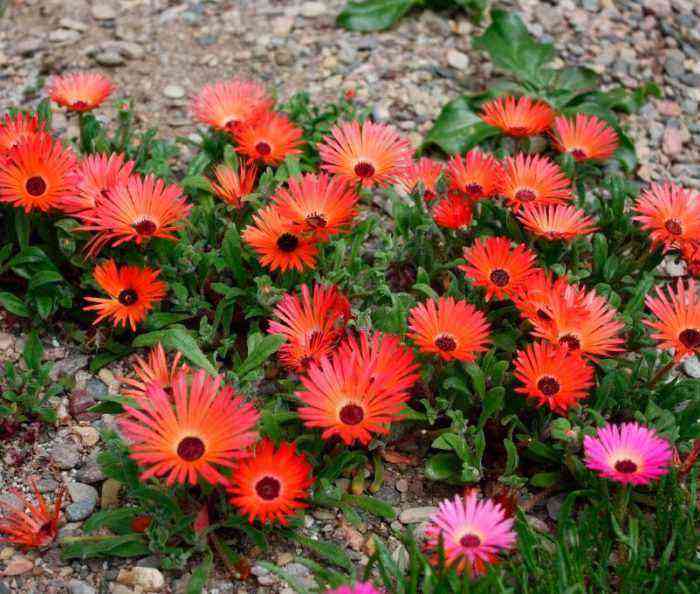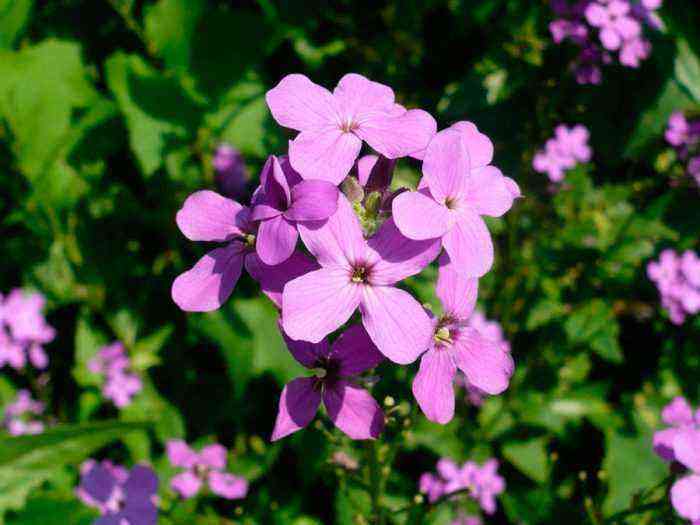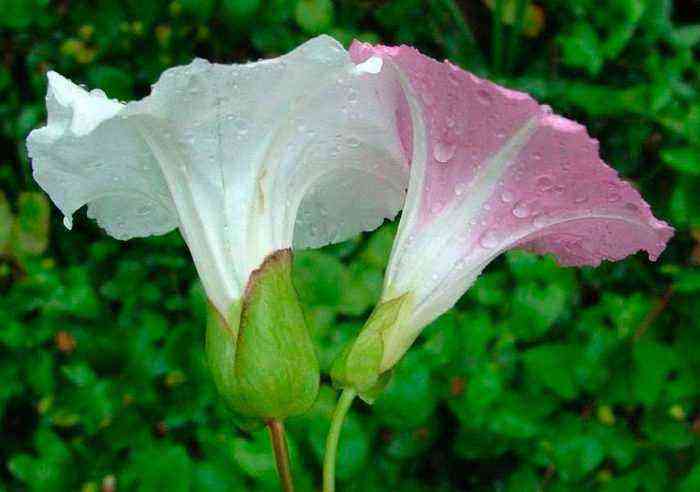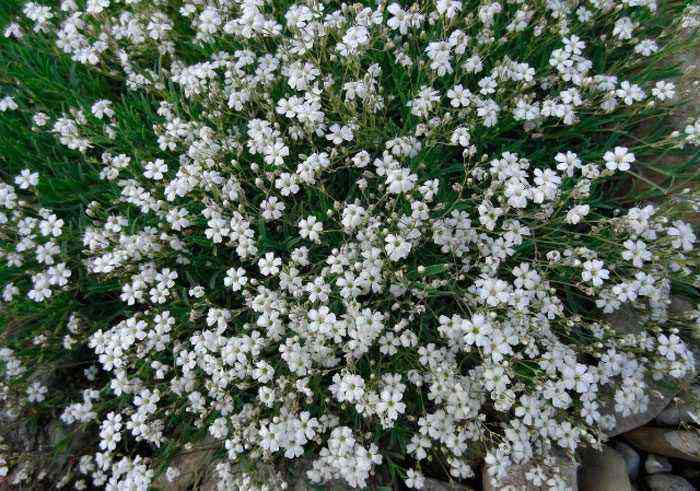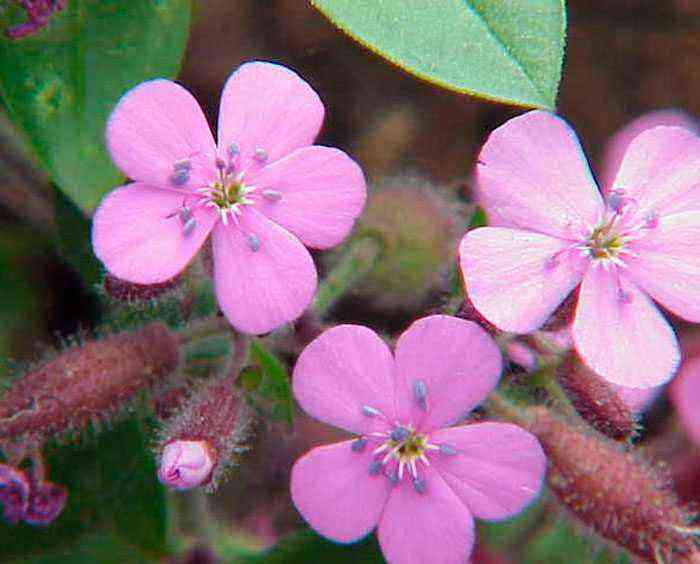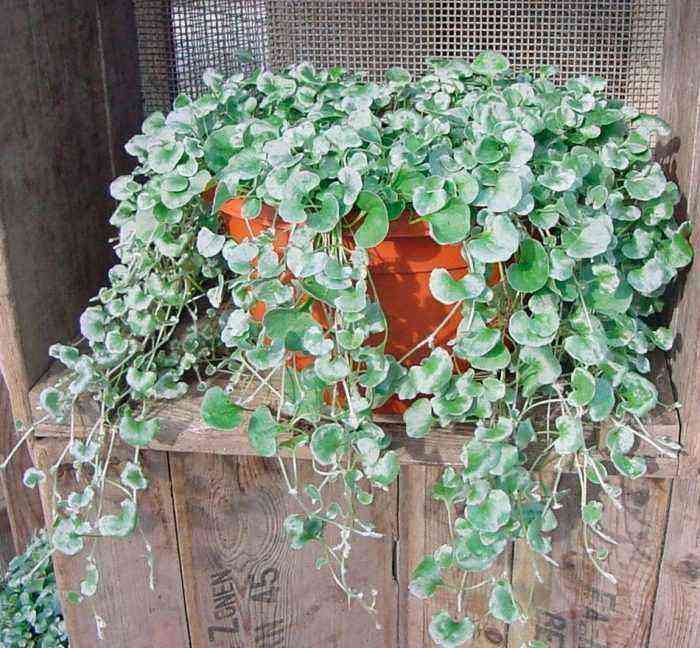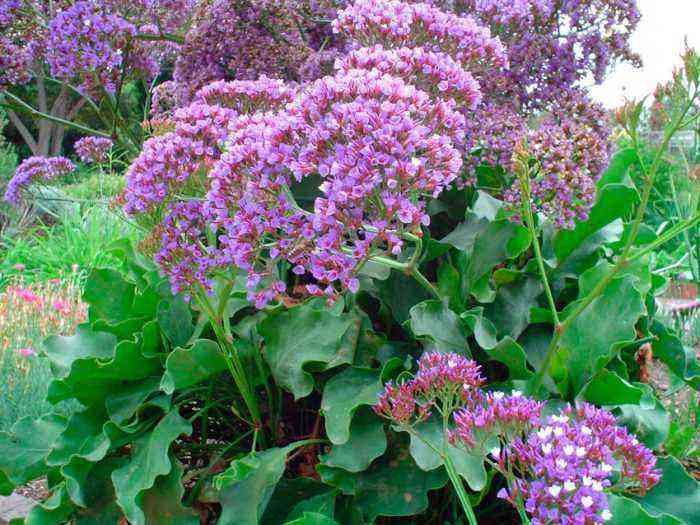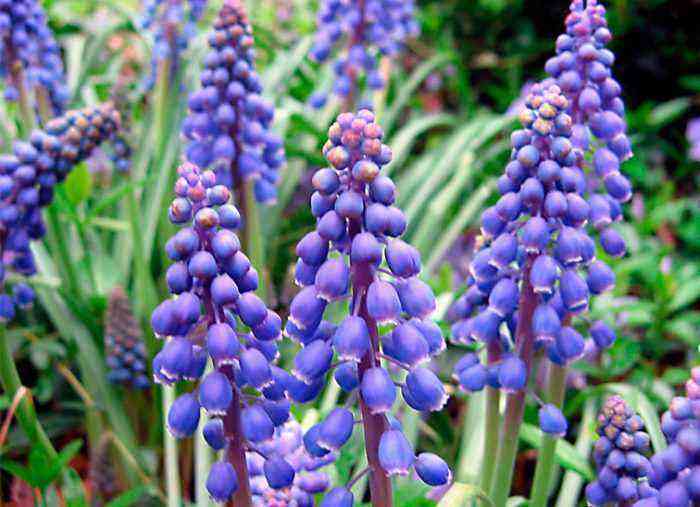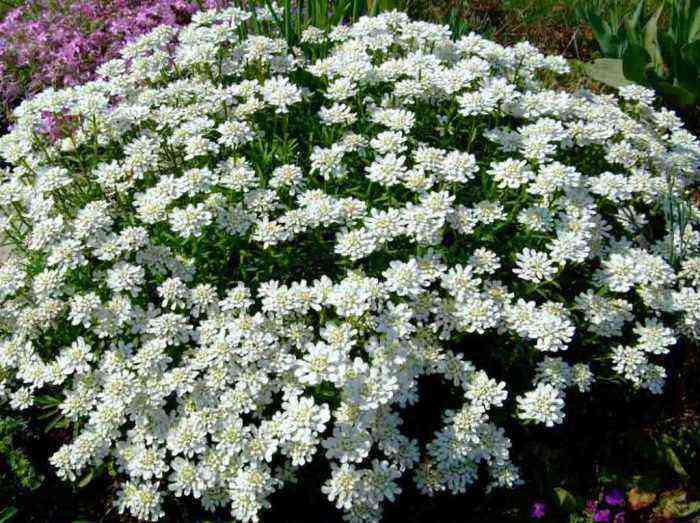An annual or perennial herb such as osteospermum (Osteospermum) belongs to the Asteraceae or Compositae family. This genus is represented by shrubs and semi-shrubs, which in the wild can be found on the territory of the African continent. The name osteospermum is derived from the Greek word for “bone” and also from the Latin word for “seed.” Such a plant is also called “Cape daisy”, “blue-eyed chamomile”, “Cape chamomile”, “African chamomile”, and also “South African chamomile”. Osteospermum is called chamomile, because the flowers of representatives of this genus are outwardly similar to the inflorescences of plants belonging to the genus Nivyanik. Only a few types of osteospermum are grown by gardeners as ornamental plants.
Features of osteospermum
Osteospermum is an evergreen plant that does not exceed 100 centimeters in height. As a rule, the bushes have erect shoots, but there are species with creeping stems. The edge of the leaf plates is uneven. The flowers are inflorescence baskets, the diameter of which is 4-10 centimeters. They consist of purple, pink, yellow, white, violet or orange reed flowers, as well as blue central tubular flowers. Osteospermum differs from other representatives of the aster family in that its median tubular flowers are sterile (sterile), and the seeds are tied with reed flowers.
This plant is used to decorate patios and flower beds, and they are also grown in tubs and pots. Lush bloom ends only in November. Such a plant is resistant to heat, short-term drought and light frost. In middle latitudes, perennial osteospermum is usually grown as an annual.
Growing osteospermum from seeds
Sowing
Sowing dry seeds of osteospermum on seedlings is carried out in the last days of March or the first in April. For this, peat tablets or containers filled with a loose mixture of sand and peat are used. In order for the seeds to germinate faster, they should be placed in a damp cloth for several hours before sowing. At the same time, remember that you cannot soak these seeds, as they react to this extremely negatively. One seed is laid out on the wet surface of the substrate and, with the help of a toothpick, it is buried half a centimeter into the soil. Crops are harvested in a warm enough place with a temperature of 20 to 22 degrees. The first seedlings may appear already after 7 days, after which they need to be moved to a very well-lit place. If the seedlings are grown in a container, then when they have 2 or 3 true leaf plates, it will be necessary to pick them in individual containers, and do not forget to deepen part of the stem. If tall varieties are grown, then after transplanting them, it is imperative to pinch the plant a little, this will help to get more abundant flowering in the future, and also prevent the seedlings from stretching too much. From the first days of May, you should start hardening the seedlings. To do this, they systematically open a window in the room or transfer the seedlings to the balcony. At first, the duration of this procedure should not exceed 10-15 minutes, and then it should be gradually increased.
Planting seedlings in open ground
In open soil, osteospermum seedlings are transplanted in the last days of May. For planting, you should choose a sunny area, but this flower can also be grown in a shaded place. A distance of 20 to 25 centimeters must be kept between the landing holes. Their depth should be such that not only the root system can fit, but also an earthen lump. Seedlings must be carefully transferred into prepared holes, which are covered with a soil mixture consisting of humus, sod and leafy soil, as well as sand (1: 1: 1: 1). Tamp down the surface of each hole. The planted seedlings need abundant watering. Flowering will begin in June.
Osteospermum care in the garden
It is very easy to grow osteospermum. All that is needed is to water it moderately, to feed it in time during flowering, and also to cut off the inflorescences that have begun to fade in time. In the event that it is still cold enough at night in May, then the osteosperm will need to be covered.
Watering such flowers, as a rule, is required only during a long dry period. The fact is that due to a lack of moisture, flowers may begin to shrink. If it rains systematically, then osteospermum can do without watering.
To increase the splendor and duration of flowering, it is necessary to feed this plant with complex mineral fertilizer 2 times a month, while using ½ part of the recommended dosage indicated on the package. If there is prolonged sultry weather, then the process of bud formation in the osteospermum stops. After the air temperature drops, the lush bloom continues.
Pests and diseases
Despite the fact that osteospermum is highly resistant to diseases and pests, it can still have problems of this kind. For example, if a flower grows in a shaded place and at the same time is watered quite often and abundantly, then its defense system weakens, which leads to the defeat of fungal diseases. This is manifested in the fact that the root system of the bush rots, and he himself dries up. In this regard, it is best to grow osteospermum in a sunny area, while remember that between waterings, the soil surface must definitely dry out well. Treat the affected specimens with a fungicide.
If the plant is weakened, then aphids can settle on its shoots and leaf plates, sucking juice from it. In the affected bush, the leaves turn yellow and fall off, while the plant itself withers. In order to get rid of aphids, it is necessary to treat the bushes with acaricides (Aktara, Aktellik or Karbofos).
After flowering
After winter comes, the one-year osteospermum will die. But there is a way to make a perennial plant out of it. In autumn, dig up the bushes and plant them in pots, which should be placed in a cool room, where they will bloom for quite some time.
Types and varieties of osteospermum with photos and names
In the wild, there are approximately 45 species of osteospermum. The most popular are the following types:
Osteospermum of Eclon (Osteospermum ecklonis)
It occurs naturally in the eastern part of the Cape region. Some forms have straight shoots of half a meter in height, others are undersized, spreading, practically creeping bushes. The diameter of the inflorescences-baskets is about 8 centimeters, their central part is violet-red, and on the lower surface of the white reed flowers there are many veins of pink color. There is a variety in which the middle flowers are painted in a pale blue color.
Shrub osteospermum (Osteospermum fruticosum)
The homeland of this species is the southern part of the Cape region. Its creeping shoots can cover vast areas. Reed flowers are painted in white, pale lilac or red. Such a plant was introduced to California, where it spread very strongly.
Osteospermum (Osteospermum jucundum)
It is a perennial plant native to the interior regions of South Africa. Flowering lasts almost all year round. The ligulate flowers are pink-purple in color, which becomes darker towards the center.
There are many hybrids and varieties of this plant, but how they came into being is still not clear. The most popular of them are:
- Bamba… This variety, in comparison with other varieties and types of osteospermum, has wider marginal flowers. When they first bloom, they have a pure white color, which eventually changes to purple.
- Buttermilk… The height of the bushes is about 0,6 m. The color of the leaf plates is greenish-gray. The marginal flowers are light yellow, and the middle ones are dark.
- Cannington Roy… This undersized dwarf shrub is creeping. The diameter of the baskets is about 8 centimeters, they consist of white corollas with purple tips, over time their color changes to lilac-pink.
- Congo… In this variety, the inflorescences are small, and the color of the reed flowers is purple-pink.
- Pemba… The ligulate flowers of such a plant grow together into a tube up to the middle.
- Lusaka… The ligulate flowers are long and pale purple in color.
- Volta… At the beginning, the reed flowers have a pink-lilac color, but then it changes to almost white.
- Silver Sparkler… The height of the bushes is about 0,4 m. The color of the marginal flowers is white. There are light colored dots on the sheet plates.
- Sandy Pink… The bush reaches a height of 0,4 m. The color of the baskets is pink, while the shape of the marginal flowers is similar to a spoon.
- Starry Eyes… The height of the bush is slightly more than 50 centimeters. The lower surface of the reed flowers folded in half lengthwise is bluish-gray, and the upper surface is white.


